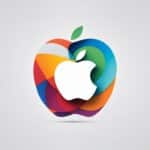Table of Contents
Mac OS X is a powerful operating system created by Apple Inc. that has transformed the world of personal computing. It is renowned for its user-friendly interface, exceptional stability, and robust security features, making it a preferred choice for individuals and professionals alike.
Since its inception, Mac OS X has undergone numerous iterations and developments, each bringing forth new advancements and improvements. With its sleek design and innovative features, Mac OS X continues to be at the forefront of the digital workforce, enabling enhanced productivity, seamless collaboration, and effortless integration with other devices and software.
Key Takeaways
- Mac OS X is an operating system developed by Apple Inc. for personal computing.
- It is renowned for its user-friendly interface, exceptional stability, and robust security features.
- Mac OS X has undergone numerous iterations and developments over the years.
- It enables enhanced productivity, seamless collaboration, and effortless integration with other devices and software.
- Mac OS X continues to be at the forefront of the digital workforce.
Evolution of Mac OS X
Mac OS X, developed by Apple, has a rich history spanning over two decades since its inception in the early 2000s. The operating system has undergone significant changes and improvements over the years, which have helped shape its user interface and functionality, providing an unparalleled user experience.
The development of Mac OS X began in the late 1990s when Apple acquired NeXT Computer, a company founded by Steve Jobs in 1985 after being ousted from Apple. The acquisition paved the way for the development of Mac OS X, which brought a new level of innovation to personal computing.
One of the defining features of Mac OS X is its Unix-based architecture. This makes it more stable and secure than its predecessors, as well as more compatible with other platforms. The operating system’s first iteration, Mac OS X Server 1.0, was released in 1999, followed by the consumer version, Mac OS X 10.0 Cheetah, in 2001.
| Version | Release Date | Notable Features |
|---|---|---|
| Mac OS X 10.1 Puma | 2001 | Improved performance and Aqua interface enhancements |
| Mac OS X 10.2 Jaguar | 2002 | Increased speed and stability, support for Windows-based networking |
| Mac OS X 10.3 Panther | 2003 | Enhanced Exposé feature, support for Windows file sharing, faster performance |
| Mac OS X 10.4 Tiger | 2005 | Spotlight search, Dashboard widgets, Automator, Safari web browser |
| Mac OS X 10.5 Leopard | 2007 | New Dock design, Time Machine backup, Quick Look preview feature |
| Mac OS X 10.6 Snow Leopard | 2009 | Increased speed and efficiency, Grand Central Dispatch, OpenCL technology |
| Mac OS X 10.7 Lion | 2011 | New Mission Control feature, Launchpad app launcher, enhanced support for multi-touch gestures |
| Mac OS X 10.8 Mountain Lion | 2012 | iCloud integration, Notification Center, AirPlay Mirroring |
| Mac OS X 10.9 Mavericks | 2013 | Finder tabs, Maps and iBooks integration, enhanced multi-display support |
| Mac OS X 10.10 Yosemite | 2014 | Redesigned interface, Continuity and Handoff features, iCloud Drive |
The iterations that followed included Sierra, High Sierra, Mojave, Catalina, and most recently, Big Sur, which introduced a redefined user interface, integration with iOS applications, and improved security features.
Throughout its history, Mac OS X has remained at the forefront of technological innovation, with Apple leading the way in developing an operating system that is both user-friendly and cutting-edge in terms of its functionality and security. Its continuous development and iteration have made it one of the most popular operating systems globally, with many users considering it the gold standard in personal computing.
Key Features of Mac OS X
Mac OS X is renowned for its exceptional usability, stability, performance, and security features. End-users worldwide have consistently ranked it as their preferred operating system for personal computing. In this section, we will take a closer look at the distinctive features of Mac OS X that set it apart from its competitors.
User Interface
Mac OS X has a sleek and intuitive interface that allows users to navigate easily through the operating system and run multiple processes simultaneously. The interface is highly customizable, giving users the flexibility to adjust its components to suit their preferences. Users can also access all their files, applications, and tools in one location, making it more accessible and efficient to use.
Stability and Performance
Mac OS X is known for its robustness and stability, which reduces the risk of system crashes and data loss. The operating system’s architecture makes it efficient in running multiple applications and processes concurrently, without sacrificing performance. This allows users to work on demanding tasks without experiencing any lag in the system’s performance.
Security
Security is a top priority for Apple, and Mac OS X reflects this through its robust security features. Mac OS X’s built-in security protocols protect users against malware, ransomware, and other cyber threats. This includes regular security updates and the ability to encrypt sensitive data and files. The operating system is also designed to provide users with a secure platform for online transactions and data sharing.
Mac OS X in the Digital Workforce
Mac OS X has transformed how businesses and individuals approach work, offering enhanced productivity, seamless collaboration, and effortless integration with other devices and software. The platform provides a range of features for professionals, unlocking new levels of efficiency and creativity in the workplace.
Productivity
Mac OS X’s intuitive interface and advanced performance features significantly boost productivity levels. With full-fledged support for multitasking, users can seamlessly switch between applications and work on multiple projects simultaneously, allowing for a more seamless, streamlined workflow.
Additionally, Mac OS X’s advanced data control mechanisms, such as its Finder search feature, make it easy for users to organize and manage files, freeing up more time to focus on other aspects of work. Mac OS X is also home to a vast array of productivity-enhancing applications, including Pages, Keynote, and Numbers.
Collaboration
Collaboration is crucial in today’s digital workforce, and Mac OS X offers a range of features to help professionals work together seamlessly. With apps like FaceTime, users can quickly and easily communicate with colleagues, whether they’re working remotely or in an office environment, resulting in increased team efficiency and better outcomes.
Mac OS X also offers access to advanced collaboration tools like Slack and Microsoft Teams, providing real-time collaboration and file-sharing capabilities, enabling dispersed teams to work together as if they were in the same room.
Integration
One of the most significant benefits of Mac OS X is its ability to integrate with other devices, whether they’re Apple or non-Apple products. Apps like Handoff, AirDrop, and Continuity make it possible to share content seamlessly across different platforms, further enhancing productivity and collaboration.
Also, Mac OS X’s integration with the cloud enables users to access their files and applications from anywhere, allowing for greater flexibility and mobility in the workplace.
“Mac OS X offers unparalleled integration capabilities, providing an ecosystem that allows for seamless collaboration and communication across diverse devices.”
Conclusion
After examining the evolution and key features of Mac OS X, it is clear that this operating system has had a significant impact on the world of personal computing. With its intuitive interface, exceptional stability, top-notch performance, and robust security measures, Mac OS X is a preferred choice for users worldwide.
Furthermore, Mac OS X has become an integral part of the digital workforce, offering enhanced productivity, seamless collaboration, and effortless integration with other devices and software. Its ecosystem of tools and applications makes it a valuable asset for professionals across various industries.
Overall, Mac OS X has revolutionized personal computing experiences and continues to be a leading operating system in the market. Its dedication to innovation and user-friendliness has made it a beloved choice for many, and its impact on the industry is undeniable.
FAQ
What is Mac OS X?
Mac OS X is Apple’s innovative operating system for personal computing. It offers a range of advanced features and capabilities to enhance user experience and productivity.
What is the history of Mac OS X?
Mac OS X has undergone several iterations and advancements since its development by Apple in the early 2000s. It has evolved to become a powerful and user-friendly operating system.
What are the key features of Mac OS X?
Mac OS X boasts an intuitive user interface, exceptional stability, excellent performance, and robust security measures. These features make it a preferred choice for users worldwide.
How does Mac OS X benefit the digital workforce?
Mac OS X offers a range of tools and applications that enhance productivity, enable seamless collaboration, and allow effortless integration with other devices and software. It has become an integral part of the digital workforce.
Why should I choose Mac OS X for personal computing?
Mac OS X provides a secure, powerful, and user-friendly operating system that has revolutionized personal computing experiences. Its advanced features and continuous advancements make it an ideal choice for users.







